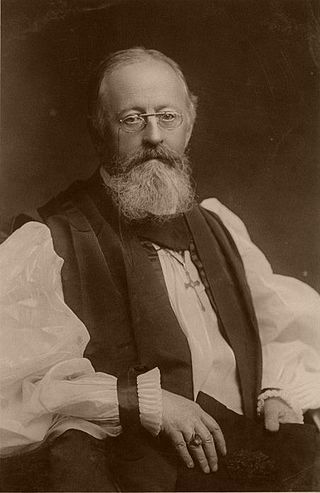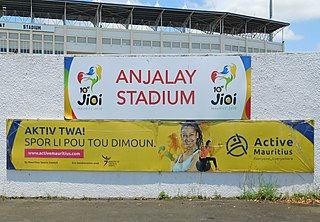
Mauritius, officially the Republic of Mauritius, is an island country in the Indian Ocean, about 2,000 kilometres off the southeastern coast of East Africa, east of Madagascar. It includes the main island, as well as Rodrigues, Agaléga, and St. Brandon. The islands of Mauritius and Rodrigues, along with nearby Réunion, are part of the Mascarene Islands. The main island of Mauritius, where the population is concentrated, hosts the capital and largest city, Port Louis. The country spans 2,040 square kilometres (790 sq mi) and has an exclusive economic zone covering 2,300,000 square kilometres.
The known and sometimes formally documented history of Mauritius begins with its possible discovery by Austronesians under the Austronesian expansion from pre-Han Taiwan, circa 1500 to 1000 BC, and then by Arabs,, followed by Portuguese and its appearance on European maps in the early 16th century. Mauritius was successively colonized by the Netherlands, France and Great Britain, and became independent on 12 March 1968.

Mohandas Karamchand Gandhi was an Indian lawyer, anti-colonial nationalist and political ethicist who employed nonviolent resistance to lead the successful campaign for India's independence from British rule. He inspired movements for civil rights and freedom across the world. The honorific Mahātmā, first applied to him in South Africa in 1914, is now used throughout the world.
A royal commission is a major ad-hoc formal public inquiry into a defined issue in some monarchies. They have been held in the United Kingdom, Australia, Canada, New Zealand, Norway, Malaysia, Mauritius and Saudi Arabia. In republics an equivalent entity may be termed a commission of inquiry.

Sir Seewoosagur Ramgoolam, often referred to as Chacha Ramgoolam or SSR, was a Mauritian physician, politician, and statesman. He served as the island's only chief minister, first prime minister, and fifth governor-general.
Mauritians of Chinese origin, also known as Sino-Mauritians or Chinese Mauritians, are Mauritians who trace their ethnic ancestry to China.
South Asians are part of the Hong Kong society. As of the 2021 by-census, there were at least 101,969 persons of South Asian descent in Hong Kong. Many trace their roots in Hong Kong as far back as when the Indian subcontinent was still under British colonial rule and as a legacy of the British Empire, their nationality issues remain largely unsettled. However, recently an increasing number of them have acquired Chinese nationality.

The Royal College Curepipe is considered as the most prestigious secondary school with high admission standards in Curepipe, Mauritius. Since 1791 it has been regarded as a school of excellence and started to build a consistent laureateship from the 1800s.
Chindian (Hindi: चीनी-भारतीय; Chinese: 中印人; pinyin: Zhōngyìnrén; Cantonese Yale: Jūngyanyàn; Tamil: சிந்தியன்; Telugu: చిండియన్స్; is an informal term used to refer to a person of mixed Chinese and Indian ancestry; i.e. from any of the host of ethnic groups native to modern China and India. There are a considerable number of Chindians in Malaysia and Singapore. In Maritime Southeast Asia, people of Chinese and Indian origin immigrated in large numbers during the 19th and 20th centuries. There are also a sizeable number living in Hong Kong and smaller numbers in other countries with large overseas Chinese and Indian diaspora, such as Jamaica, Trinidad and Tobago, Suriname and Guyana in the Caribbean, as well as in Indonesia, the Philippines, the United States, Canada, United Kingdom, Australia, and New Zealand.

William Walsh was a Prebendary of St Paul's Cathedral, Bishop of Mauritius and Dover. At the end of his life he was Archdeacon of Canterbury. While he was Bishop of Mauritius, the island experienced one of its worst cyclones; in consequence his cathedral had to be used temporarily as a hospital.

Sir Eric Norman Spencer Crankshaw was an English cricketer, military officer and civil servant. He worked closely with Winston Churchill during both world wars.
The growing of sugar cane has been the dominant industry of Mauritius for most of its inhabited period. The island was totally uninhabited when first discovered by the Portuguese in 1507. Sugar was introduced during the period of Dutch Mauritius (1638–1710) mostly to make Arak and slaves were imported to work on sugar cane and other crops. After about 1735, during the period of French Mauritius (1715–1810), under the French East India Company, the industry developed considerably. In 1735 there were 638 slaves in a population of 838 inhabitants. Thereafter, some 1,200 to 1,300 slaves arrived annually; within five years the number of slaves had quadrupled to 2,612 and the number of French had doubled.
The following is a timeline of the history of the city of Port Louis on the island of Mauritius.

Jennie V. Hughes was an American Methodist missionary in China. She co-founded the Bethel Mission in Shanghai with Chinese doctor Shi Meiyu.
Maurice Curé (1886-1977) was one of the founders of the Labour Party in Mauritius in 1936.

The 1943 Belle Vue Harel Strike refers to a significant strike which escalated into riots amongst labourers working in the fields of the Belle Vue Harel Sugar Estate, near the village of Belle Vue Harel on the island of Mauritius in September 1943. The riots led to the death of 4 people with an additional 16 people being injured.
Sir William Newton (1842-1915) was a Mauritian lawyer and politician who was elected in British Mauritius to the Council of the Government of Mauritius, the predecessor of modern-day National Assembly or Parliament.
Eugène Laurent (1850-1926) was a former mayor of Port Louis and one of the founders of the political party Action Libérale in Mauritius in 1907.
The Action Libérale was a political party in Mauritius.








